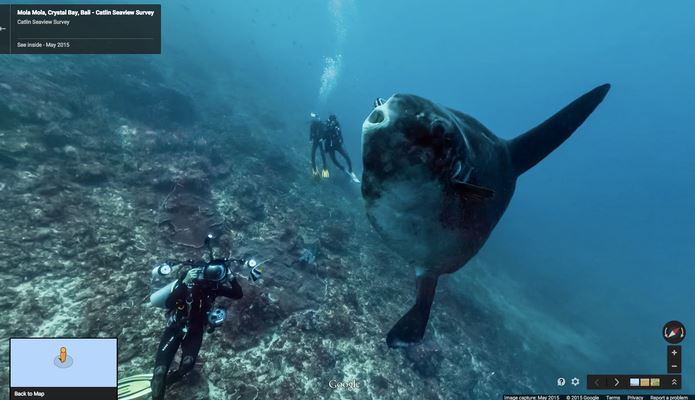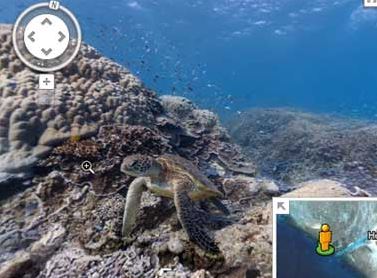Thanks to Google, we can now swim with the dolphins without getting wet. The company posted new Street View images of more than 40 underwater locations around the globe, including the American Samoa in the South Pacific Ocean, the Chagos Islands in the Indian Ocean, and deep dives in Bali, the Bahamas, and the Great Barrier Reef.
Google’s latest views reveal the wild beauty of whales, fish, and other sea creatures as well as coral reefs and shipwrecks. But the virtual tours are much more than a guide to marvel at — the images are also a way to focus on the harm being done to our oceans and the attempts to preserve the world below.

A sunfish in Bali.
To make the world more aware of our precious oceans, Google created the images in partnership with the XL Catlin Seaview Survey, NOAA’s Office of National Marine Sanctuaries, and the Chagos Conservation Trust, which are all dedicated to studying the oceans and educating people about the hazards they are currently facing.
“Home to the majority of life on Earth, the ocean acts as its life support system, controlling everything from our weather and rainfall to the oxygen we breathe,” Google said in its blog. “Yet despite the ocean's vital importance, the ocean is changing at a rapid rate due to climate change, pollution, and overfishing, making it one of the most serious environmental issues we face today.”

A sea turtle near the Solomon Islands.
As with any Street View image, you can zoom in or out and move the cursor in different directions to get a panoramic view of whatever it is you’re searching for. By going down under, Google offers fascinating close-ups of amazing creatures that live in the ocean, including a humpback whale in the Cook Islands, a sea turtle swimming near the Solomon Islands, and great white sharks swimming nearby Australia.
In order to help people understand the changes the undersea world is going through, and what it will take on over the coming years, Google has plans to publish more Street View images of the ocean’s depths.
“Mapping the ocean is key to preserving it, Google said. “Each image in Google Maps is a GPS-located digital record of these underwater and coastal environments, which can be used as a baseline to monitor change over time.”
Story via Yahoo!
Advertisement
Learn more about Electronic Products Magazine





